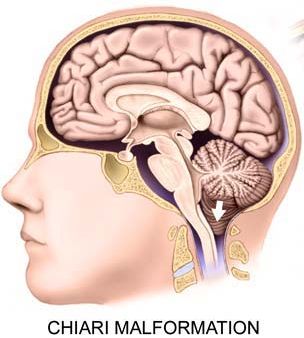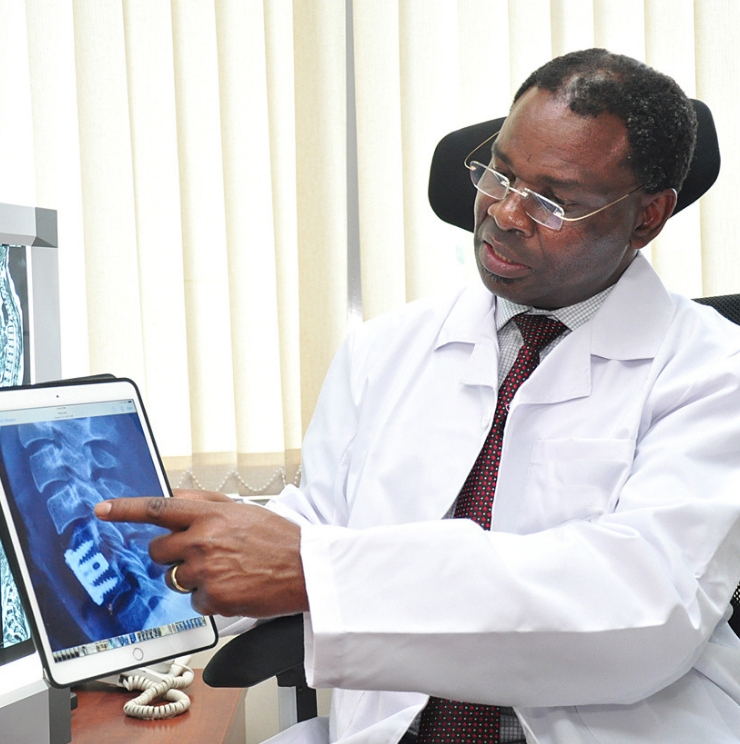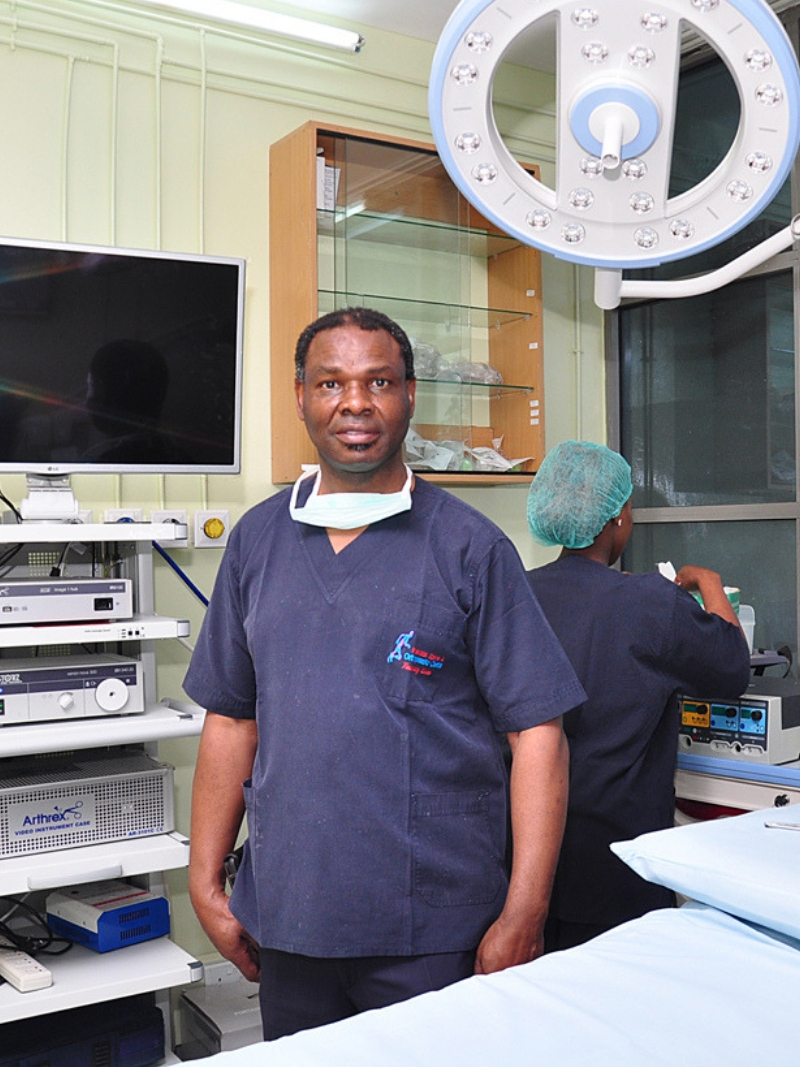Do you require any assistance? Simply reserve your appointment online below
Chiari Malformation
A Unique center devoted exclusively for orthopedics
A Chiari malformation is a structural defect in the cerebellum, the part of the brain that controls balance.
It occurs when the space below the back of the skull is too small and brain tissue gets pushed down into the spinal canal.
Not only do symptoms vary from person to person, but each person’s symptoms can change over time depending on the amount of pressure on tissues and nerves.
That unpredictability — along with the lack of a reliable diagnostic test — can make Chiari malformation very difficult to diagnose.

Signs and symptoms of Chiari Malformation

Balance problems
Difficulty swallowing or speaking – one of the most common symptoms in young children with Chiari malformation
Dizziness and fatigue
Numbness, weakness or other abnormal feelings in the arms or legs and poor hand coordination
ringing or buzzing in the ears)
sleep apnea
Spinal curvature – Chiari malformation is common in children and adolescents with scoliosis
Vision problems – common eye problems include nystagmus (rapid, involuntary movement of the eyes), blurred or double vision, and sensitivity to light
Headaches
Causes of Chiari Malformation
The majority of Chiari malformations are primary or congenital cases. They are caused by physical defects in the structure of the brain, skull, and spinal column that occur during fetal development.
Conditions associated with Chiari malformations include: myelomeningocele, a form of spina bifida, under-developed posterior fossa, scoliosis, malformed or thickened occipital bone, Ehlers-Danos syndrome, a connective tissue condition, over-crowding of the brain and spinal tissues
Chiari malformations are usually caused by structural defects in the brain and spinal cord. These defects develop during fetal development.
Due to genetic mutations or a maternal diet that lacked certain nutrients, the indented bony space at the base of the skull is abnormally small. As a result, pressure is placed on the cerebellum. This blocks the flow of the cerebrospinal fluid. That’s the fluid that surrounds and protects the brain and spinal cord.
Most Chiari malformations occur during fetal development. Much less commonly, Chiari malformations can occur later in life.
Types of Chiari Malformation
Type I.Most commonly observed type in children. In this type, the lower part of the cerebellum — but not the brain stem — extends into an opening at the base of the skull. Normally, only the spinal cord passes through this opening.
Type II also known as “classic” Chiari malformation or Arnold-Chiari malformation. They occur when parts of the cerebellum and brain stem tissue have passed through the foramen magnum.
Type III. This is the most serious form of Chiari malformation as it causes neurological problems and has a higher mortality rate . It involves the protrusion or herniation of the cerebellum and brain stem through the foramen magnum and into the spinal cord.
This form of Chiari malformation is diagnosed at birth or by an ultrasound during pregnancy.

You are in Great Hands
Treatment of Chiari Malformation

Orthopedist at Nairobi spine orthopedic center have decades of expertise with Chiari malformation. They will work with you to develop a treatment plan based on your specific symptoms and the nature of your malformation.
Watchful waiting: If you have no symptoms or only mild symptoms, or if you don’t have a definite diagnosis, the best option may be to wait and see. Your doctor will monitor you for changes in your health, including new or worsening symptoms.
Treat symptoms individually: Your doctor may recommend this approach in the following instances:
- Your symptoms are too bothersome to ignore but not severe enough to justify surgery
- You don’t want surgery or aren’t healthy enough to have surgery
- You have not received a definite diagnosis of Chiari malformation
- Surgery: Fewer than half of people diagnosed with Chiari malformation have surgery. It is typically reserved for the most severe forms, to reduce or stabilize symptoms and prevent the condition from worsening.
-
- Posterior fossa decompression, the most common surgery for Chiari malformation, relieves pressure in the area of the skull base where the spinal cord meets the brain.
- Other brain or spinal cord surgeries may be needed to relieve pressure on the spinal cord or make additional room for your brain. If so, your neurosurgeon will discuss the procedures with you.

